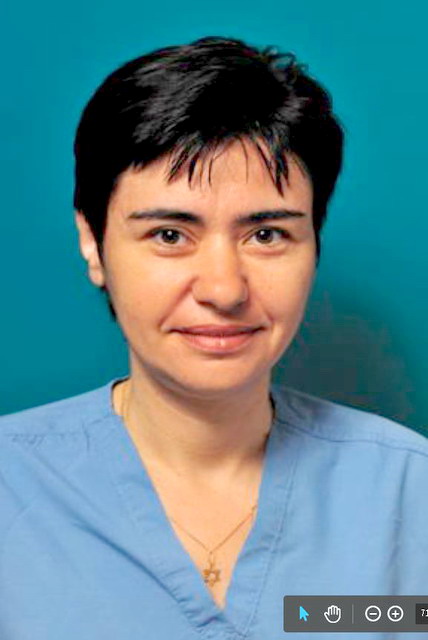Vegetative state and minimally consciousness state
The examination and treatment of patients in prolonged unconsciousness (vegetative state, including chronic, and a state of low consciousness) is carried out on the basis of the Department of Anesthesiology, Reanimation, Intensive Care of the Clinic of the FSBSI ‘IEM’ under the constant supervision of specialists with high competence and many years of experience in this pathology. Hospitalization of patients with the presence of relatives in intensive care wards is possible (in separate wards, if the patient’s condition allows).
Hospitalization is carried out on a paid basis
Long-term unconsciousness – severe consequences of craniocerebral trauma, strokes, hypoxia and other brain lesions in which, after coming out of a coma, the patient’s consciousness remains ‘quantitatively’ impaired (signs of purposeful behavior are absent or minimal). In this case, there is usually a whole range of other severe neurological manifestations of brain damage, as well as disorders of the state of other organs and systems of the body, infectious pathology, etc. There are currently no generally accepted standards for diagnosis, treatment, and outcome prediction for patients in this category.
Protocol of examination and treatment of patients in prolonged unconsciousness
Specific protocol for an effective examination and treatment of patients in a vegetative state (including chronic) and a state of low consciousness has been developed and applied in the Department of Anesthesiology, Reanimation, Intensive Care of the Clinic of the FSBSI ‘IEM’.
At the bottom of the protocol:
- International criteria for the diagnosis of the vegetative state and the minimally consciousness state using clinical and instrumental methods for determining the structural and functional state of the brain.
- Fundamental neurophysiological theories explaining the phenomenon of the vegetative state and the fundamental possibilities of getting out of it.
The main stages of the protocol:
1. Identification of patients promising for treatment (with the potential to improve consciousness) using the proposed set of examinations, methods of intensive therapy and methods of early rehabilitation.
2. Development of optimal individual treatment tactics, including both methods actively used in Russian and leading foreign clinics dealing with prolonged unconsciousness, as well as new methods and technologies at the approbation stage, having permits (with consent).
3. Ensuring control over the adequacy of the therapy, determining the indications for changing the parameters of the therapeutic effects.
4. Evaluation of treatment results.
Among the diagnostic complex we use:
Evaluation of the level of consciousness according to international criteria, specialized pharmacological and other prognostic tests, EEG monitoring, EP, ENMG, ultrasound CT scan, MRI, functional MRI, PET, laboratory studies (including microbiological and immunological) of cerebrospinal fluid, blood and other biomaterials etc.
Among treatment methodologies we use:
- Intensive pharmacotherapy for improving the functional state of the brain and consciousness using various groups of drugs. Medicines are administered not only by traditional routes (orally, intravenously, intramuscularly), but also intra-arterially to achieve their optimal concentration in the ‘target’ areas of the brain. Targeted pharmacotransport using efferent therapy methods.
- Methods of multimodal sensory brain stimulation, physiotherapeutic stimulating effects.
- The method of multi-pattern botulinum therapy is the treatment of generalized spasticity-dystonia (including pharmacoresistant) to improve the functional state of the brain and consciousness.
- A technique for the diagnosis and treatment of chronic infectious and immunopathological processes of the brain, often developing in patients and preventing the improvement of consciousness.
- Cellular technologies (autologous mesenchymal stem cells are used).
- Early rehabilitation methods (carried out by specialists and medical personnel serving the patient on the recommendation of specialists).
- Working with relatives – their training, psychological support. Relatives take part in caring for the patient, carry out elements of massage and physiotherapy exercises (after being instructed by a specialist), and so on.
Some of the methods for diagnostics, treatment and early rehabilitation of patients have been developed and introduced into clinical practice by our specialists.
Hospitalization
The decision on hospitalization is always made by a medical commission.
The decision can be made on the basis of an application with attached medical data sent to the Department of Anesthesiology, Intensive Care and Intensive Care.
It is possible for our specialists to go directly to the patient’s place of stay (as agreed) to make a diagnosis, determine the prognosis of the patient’s coming out of a coma and vegetative state, as well as the beginning of some therapeutic measures.
If necessary, after discharge, our specialists provide counseling and correction of every therapy.
Contact Information
Tel.: 8 (812) 230-92-65
e-mail: arit@iemspb.ru
Make an appointment by phone: 8 (812) 454-69-00
from 9:00 to 17:00



